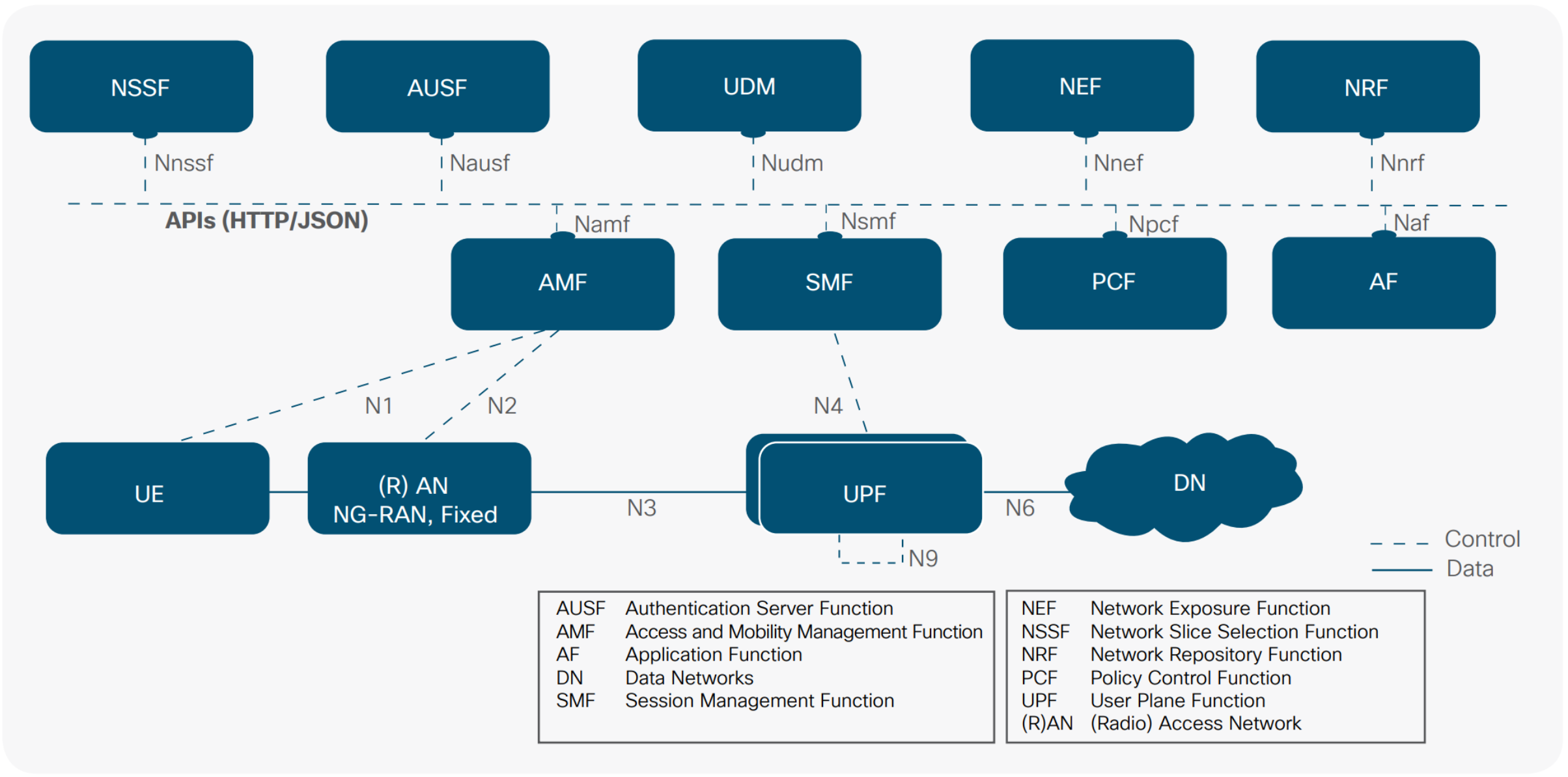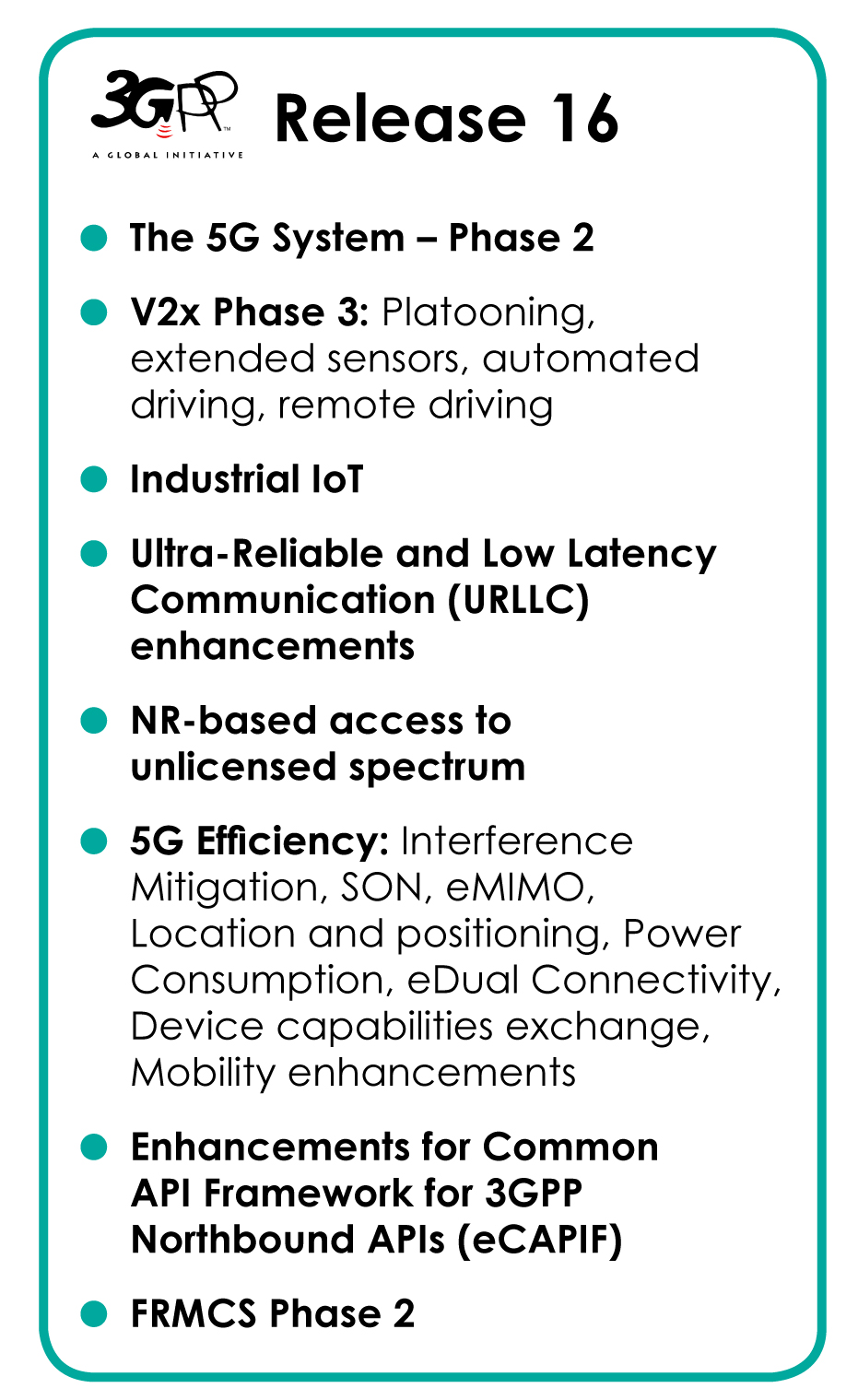5G Systems Architecture
SK Telecom Selects Ericsson 5G Packet Core (3GPP Release 16- 5GC)
SK Telecom has selected Ericsson to deliver a Cloud Packet Core for its 5G network. Ericsson says its Cloud Packet Core (part of the company’s Cloud Core portfolio) helps service providers to smoothly migrate to 5G Core (5GC) stand-alone architecture.
Author’s Note:
Please see below for more information on 3GPP 5GC which is part of Release 16 and as yet has not been submitted to either ITU-R or ITU-T for IMT 2020 mobile packet core. There seems to be no independent work on a 5G mobile packet core within ITU, which is evidently waiting anxiously for 3GPP Release 16 to be completed and forwarded to various ITU-R WPs and ITU-T Study Groups.
………………………………………………………………………………………………………………………………………………………………………………………..
Ericsson’s Cloud Packet Core is at the business end of mobile broadband and IoT networks. It creates value, visibility and control of traffic and applications by determining the optimal quality of a service, then enforcing it through appropriate policy.
Jung Chang-kwan, Vice President and Head of Infra Engineering Group, SK Telecom, says: “By utilizing Ericsson’s Cloud Packet Core network solution, which realizes simplified network operations, we will unleash the full potential of new 5G-enabled use cases with greater efficiency.”
Jan Karlsson, Senior Vice President and Head of Digital Services, Ericsson, says: “This deal, and the opportunity to work with SK Telecom’s Network Functions Virtualization Infrastructure (NFVI), has put us in the ideal position to further strengthen their 5G network. Delivering our Cloud Packet Core solution will positively impact SK Telecom’s network operations and will reinforce Ericsson’s position as a leader in 5G core.”
SK Telecom switched on its commercial 5G network in December 2018 after selecting Ericsson as one of its primary 5G vendors. Previously, Ericsson provided radio access network (RAN) products, including mid-band Massive MIMO.
………………………………………………………………………………………………………………………………………………………….
3GPP 5GC (the only specification for a 5G mobile packet core):
The 5GC (5G packet Core), specified in 3GPP TS 23.501: System architecture for the 5G System (5GS); Stage 2, will be part of 3GPP Release 16, which won’t be completed till June 2020 at the earliest.
3GPP’s 5G System architecture is defined to support data connectivity and services enabling deployments to use techniques such as e.g. Network Function Virtualization and Software Defined Networking. The 5G System architecture shall leverage service-based interactions between Control Plane (CP) Network Functions where identified. Some key principles and concept are to:
– Separate the User Plane (UP) functions from the Control Plane (CP) functions, allowing independent scalability, evolution and flexible deployments e.g. centralized location or distributed (remote) location.
– Modularize the function design, e.g. to enable flexible and efficient network slicing.
– Wherever applicable, define procedures (i.e. the set of interactions between network functions) as services, so that their re-use is possible.
– Enable each Network Function and its Network Function Services to interact with other NF and its Network Function Services directly or indirectly via a Service Communication Proxy if required. The architecture does not preclude the use of another intermediate function to help route Control Plane messages (e.g. like a DRA).
– Minimize dependencies between the Access Network (AN) and the Core Network (CN). The architecture is defined with a converged core network with a common AN – CN interface which integrates different Access Types e.g. 3GPP access and non-3GPP access.
– Support a unified authentication framework.
– Support “stateless” NFs, where the “compute” resource is decoupled from the “storage” resource.
– Support capability exposure.
– Support concurrent access to local and centralized services. To support low latency services and access to local data networks, UP functions can be deployed close to the Access Network.
– Support roaming with both Home routed traffic as well as Local breakout traffic in the visited PLMN.
The 5G architecture is defined as service-based and the interaction between network functions is represented in the following two ways:
– A service-based representation, where network functions (e.g. AMF) within the Control Plane enables other authorized network functions to access their services. This representation also includes point-to-point reference points where necessary.
– A reference point representation, shows the interaction exist between the NF services in the network functions described by point-to-point reference point (e.g. N11) between any two network functions (e.g. AMF and SMF).
…………………………………………………………………………………………………………………………………………………………………………………………………………………..
GSMA’s Position on 5GC:
The network evolution from 4G-LTE mobile packet core (EPC) to 5G Core (5GC) plays a central role in creating a powerful network platform that is capable of being exposed and automated for service providers.
5GC has been designed from its inception to be “cloud native,” inheriting many of the technology solutions used in cloud computing and with virtualization at its core. Virtualization of network functions enables 5GC to be redesigned and become open and flexible enough to meet the diversity of service and business requirement in 5G era.
5GC will also offer superior network slicing and QoS features. Another important characteristic is the separation of the control plane and user plane that besides adding flexibility in connecting the users also allows an easier way to support a multitude of access technologies, better support for network slicing and edge computing.
5GC proposes a service based architecture (SBA), which provides unprecedented efficiency and flexibility for the network. SBA is an architectural for building system based on fine-grained, interaction of loosely coupled and autonomous components called services. This architecture model is chosen to take full advantage of the latest virtualization and software technologies.
Service-based architectures have been in use in the software industry to improve the modularity of products. A software product can be broken down into communicating services. With this approach, the developers can mix and match services from different vendors into a single product.

Compared to the previous generation reference point architecture as EPC, the elements of service based architecture are defined to be the NF (network functions), which interconnect with the rest network functions across a single API calling interface and provide the authorized services to them. Network repository functions (NRF) allows every network function to discover the services offered by other network functions. A service is an atomized capability in a 5G network, with the characteristics of high-cohesion, loose-coupling, and independent management from other services. This allows individual services to be updated independently with minimal impact to other services and deployed on demand. A service is managed based on the service framework including service registration, service authorization, and service discovery. It provides a comprehensive and highly automated management mechanism implemented by NRF, which greatly reduces the complexity of network maintenance. A service will interact with other services in a light-weight manner, e.g. API invocation.
Virtualization and cloud computing have resulted in lowering the cost of computing by pooling resources in shared data centers.
- 5G core networks can be shrunk in size by using virtualization. Varies components of the core network can be run as communicating virtual machines.
- Moving the control plane of the 5G core network to a cloud provider lowers the deployment cost.
The 5G core is a mesh of interconnected services as shown in the figure below:


…………………………………………………………………………………………………………………………………………………………………………………………………………..
Ericsson Addendum:
According to Ericsson’s latest Mobility Report, published earlier this week, global 5G subscriptions will exceed 2.6bn within the next six years and by that time Ericsson predicts that 5G will cover 65 percent of the world. It also believes that total mobile subscriptions, including to previous generation networks, will reach 8.9bn from 8bn over the next six years. More than quarter of the global subscriptions will be 5G by 2025 and will account for around 45 percent of worldwide mobile data traffic.
Additionally, Ericsson has also announced its partnership with NVIDIA in order to develop technologies that will enable communication service providers to build virtualized 5G radio access networks, which will boost the introduction of new AI and IoT-based services. The ultimate focus will be to commercialize virtualized RAN technologies to offer radio networks with flexibility and ability to enter the market in a shorter time for new services like VR, AR and gaming.
References:
https://www.itu.int/dms_pub/itu-t/opb/tut/T-TUT-HOME-2018-2-PDF-E.pdf
https://www.3gpp.org/ftp/Specs/archive/23_series/23.501/
https://www.ericsson.com/en/portfolio/digital-services/cloud-core/cloud-packet-core
https://medium.com/5g-nr/5g-service-based-architecture-sba-47900b0ded0a


